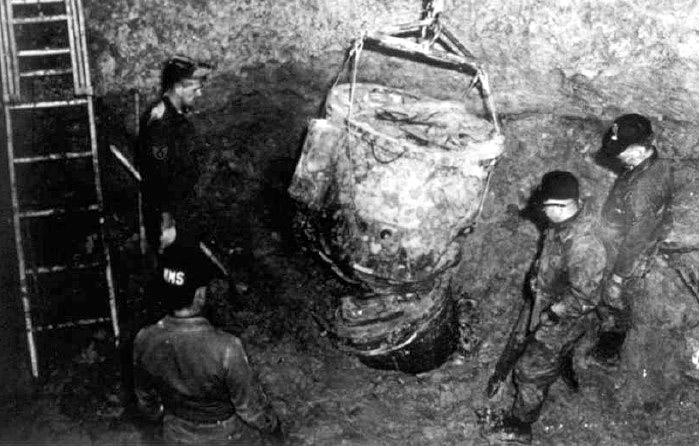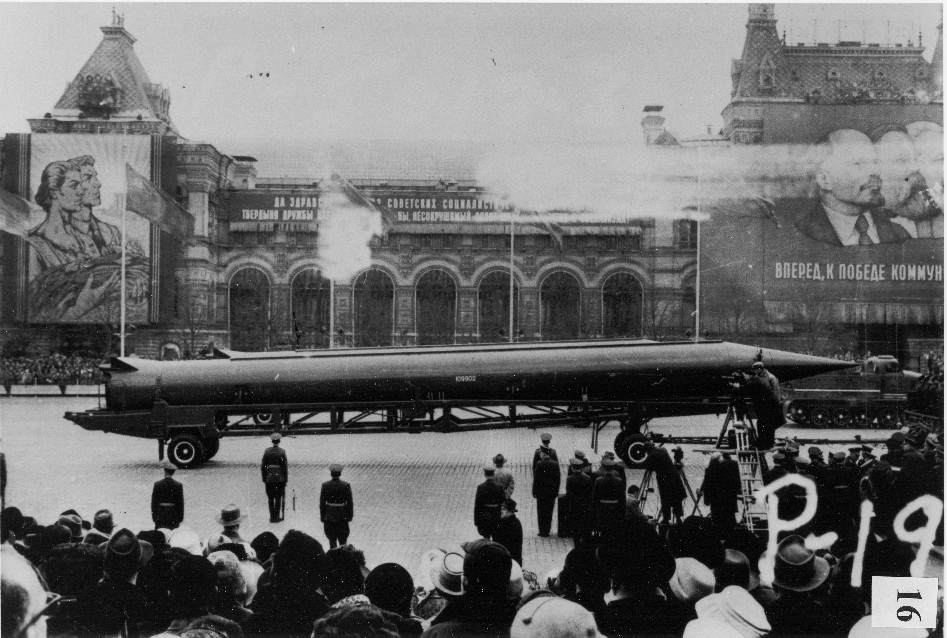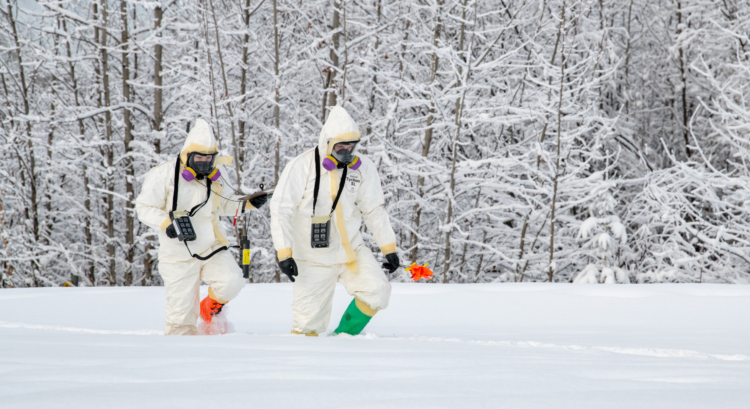Whoopsies surrounding the lethal weapon have nearly brought the world to an end a dozen times since its discovery in the early twentieth Century.
Since its invention in the early 1940s, it has been estimated that there are roughly 13,080 nuclear warheads owned by powerful nations across the globe, with Russia and the United States maintaining more than 90 percent of atomic weapons in their arsenals today.
And with such a large number of highly destructible munitions kept worldwide that could be launched with a single push of a button, there have already been numerous reports of almost incidents throughout the years—hair-trigger alerts and ready-to-launch moments—only to be canceled at last minute.
Quick Nuclear History Recap
The success of the Manhattan Project armed the US, which the country exercised soon after when it dropped two of its atomic bombs on the cities of Hiroshima and Nagasaki in August 1945 and ultimately led to the surrender of Japan at the near end of the Second World War.
Despite efforts to keep its new weapon to itself, the blueprint for building a fission-style bomb slipped out of Washington’s hands and into the Soviets four years later, which eventually became the precursor of the Cold War arms race. The United Kingdom, France, and China followed a couple more years later, each having to test and own nuclear weapons in their arsenals by 1952, 1960, and 1964, respectively.

India, Israel, and Pakistan also discovered and developed their own versions of the highly destructible munitions, while Iraq, Iran, and Libya all pursued secret nuclear programs beginning in the 1990s. Another notorious country to have initiated nuclear activities is North Korea, which claimed to have successfully tested advanced devices equipped with lethal warheads sometime in the mid-2000s to the present.
Noticing the increasing number of nukes being developed, the US sat down and negotiated treaties, including the Nuclear Nonproliferation Treaty (NPT) in 1968 and the Comprehensive Nuclear Test Ban Treaty (CTBT) in 1996, to prevent further expansion together with other like-minded countries. However, only some nuclear-armed nations signed the pact. North Korea initially signed the NPT but announced its withdrawal from the treaty in January 2003. It forged a denuclearization agreement with its neighboring South, but Pyongyang has openly violated this, particularly in recent years, in order to advance its nuclear program. Today, the North ranks ninth in the world’s nuclear-armed states, with an estimated 50 nuclear warheads in its arsenals, but its actual size is unknown.
Almost Accidental Nuclear War
During the height and heat of the Cold War, there were dozens of reported nuclear close calls that almost triggered Nuclear War and/or World War III, with the majority of these almost being due to nearly unintended detonations caused by accidents or miscalculations, as well as technical errors and misinterpretation of data. Overall, at least 22 declared very narrow misses have been since the lethal weapon was invented. Below are some of the most significant, spine-chilling nuclear close-call moments.

1956 Suez Canal Crisis
Tensions surrounding the Suez Canal Crisis in the fall of 1956 were plagued with numerous false alarms that almost pulled the world into yet again another global war. While Britain and France were busy plotting to seize back control over the Suez Canal from Egypt, the Soviet Union suggested the US join forces with them and use non-nuclear strength to diffuse the fighting before it could further escalate.
However, on that night of November 5, North American Aerospace Defense Command (NORAD) headquarters received a series of alerts that entailed apparent unidentified aircraft heading toward Turkey; that dozens of Soviet jet fighters were flying over Syria, a British bomber plane had been hit and crashed to the ground, and a fleet of Soviet ships was mobilized in Turkey—sending the US on a brief frenzy that these actions were a Soviet offensive and worried that it might snowball into a nuclear strike by North Atlantic Treaty Organization (NATO). Fortunately, before things got out of hand, the threat was neutralized after determining that the previous events resulted from coincidence or misinterpretation.
Apparently, the unidentified aircraft hovering over Turkey was a flight of swans, the Soviet MiG plane was an escort for a Syrian President heading home from a visit to Moscow, the plane crash of the British bomber was due to mechanical issues, and the Soviet fleet was conducting a scheduled routine military exercise. All but an unfortunate coincidence.
1960 Moonrise Mistaken as Attack
Bad information is common, and it surely is easy to misinterpret if not thoroughly checked. Despite the advancement offered by computers, these systems were still prone to commit an error—especially in infancy—which usually triggered false alarms, especially during the earlier years. Among these was when the alert systems misperceived the moon rising as an incoming attack.
The early warning radar set up by the US at Thule, Greenland, reported to NORAD in Colorado Springs on October 5, 1960, that dozens of Soviet missiles were launched and coming in hot towards the stateside. Luckily, then-Soviet leader Nikita Khrushchev was visiting New York around that time, which raised doubts about an imminent attack. This was proven later when investigations showed that “the radar had been fooled by the moonrise over Norway” and that the computer system had mistaken it for an all-out incursion.
1961 B-52 Crash in North Carolina
A single, tiny safety switch was between a 20-megaton Mk39 thermonuclear bomb and thousands of lives living in North Carolina when a B-52 bomber crashed over Goldsboro on January 24, 1961. The aircraft was carrying two bombs when it suffered a fuel leak in the wing mid-air and exploded. According to reports, one bomb broke on impact after its parachute failed, while the other one safely landed but barely. You see, only one out of its six safety switches kept the bomb from annihilating a large part of the state, with then-Defense Secretary Robert McNamara having to describe the accident “by the slightest margin of chance, literally the failure of two wires to cross, a nuclear explosion was averted.”
Months following the incident, the Air Force thoroughly combed the area to recover the bomb’s hazardous materials. When they couldn’t find the missing uranium, it was reported that the service “purchased the land in the area where they believed it was lost.”

If it had exploded, misinterpretation could have occurred, especially given that the crash happened during the height of the Cold War.
1962 Cuban ‘Missile Scare’ Crisis
The Cuban Missile Crisis, also known as the Missile Scare, arguably has to be one of the most chaotic, on-the-edge series of tense events that nearly initiated an ugly confrontation between the US and the Soviet Union in 1962. This was when either side kept the big red button close, fearing the other would attack at any moment. Although relatively short, within the October 1962 Crisis, at least ten nuclear very close calls happened.

Some of these incidents include when a Soviet satellite exploded shortly after entering its parking orbit on the 24th, which the US has mistaken as a launching of a massive USSR intercontinental ballistic missile (ICBM). Shortly after midnight the following day, a guard saw an intruder climb the fences of Duluth Sector Direction Center and shoot at it, triggering a sabotage alarm that immediately directed a fleet of nuclear-armed F-106A interceptor aircraft in Winsconsin to take off. Fortunately, the deployment was stopped merely last minute, with later investigation revealing that the intruder was a large black bear. The 26th was the busiest as it was plagued with several false alarms left and right throughout the day, which was stirred by unannounced test launches of ICBMs and the threat of unauthorized launch when “proper handover procedures and safety checks were skipped at the Malmstrom Air Force Base” in exchange for efficient deployment of the missiles. Two days later, another false alarm was triggered when “radar operators at Moorestown, New Jersey, reported to NORAD headquarters that a nuclear attack was underway,” with an estimated area of impact located at Tampa, Florida. Fortunately, mere minutes before taking action, NORAD discovered that the operators confused a test tape simulation as an attack. On the same day, another close call was prevented when operators of the then-newly functional Laredo warning center misidentified an orbiting satellite over Georgia.
Despite the threat of nuclear war, the world got through the Cuban Missile Crisis without witnessing the detonation of each side’s highly destructible weapons.
1967 Solar Flare Trouble
As technology continues to be emerging from its infancy stage, computer warning systems encountering technical issues has become common with the previous years misidentifying attacks from a flock of swans, the moon rising, and the solar flare that alerted the Air Force on May 23, 1967, that Soviet missiles were heading towards the stateside.
The then-newly installed series of Ballistic Missile Early Warning Systems in the Arctic suddenly went offline, leading officials to believe that the Soviets had managed to disable the system. As the Air Force began to prepare for retaliation, commanders received a last-minute call from NORAD that the blackout was caused not by sabotage and infiltration but by a huge solar storm.
1968 Another Bomber Plane Crash
Another B-52 bomber carrying a hydrogen bomb crashed this time in Greenland a couple of miles offshore, and like the previous plane accident, fortunately, it did not detonate despite the fuel and other conventional explosives onboard blowing up. Had the nuclear component detonated, the Strategic Air Command would likely assume this to be a deliberate attack considering the pilot and crew lacked communication.
1974 At the Hands of an Unstable President
By now, close nuclear calls are determined to be caused by either technical misinterpretation or human error, and this is what happened in August 1974 when a “clinically depressed, emotionally unstable, and drinking heavily” US President Richard M. Nixon had been steered clear to any emergency order amid the Watergate Crisis by then-Secretary of Defense James R. Schlesinger. Recognizing that Nixon might compromise nuclear safety and security, Schlesinger instructed the Joint Chiefs of Staff to route “any orders” from the unstable president, “such as a nuclear launch order,” through him first.
1983 Soviet Satellite Confused Clouds to Nuclear Attack
Probably one of the most notable close calls, in 1983, a Soviet officer on duty had prevented a potential nuclear war when he went against the early warning system that went off due to an alleged detection of five American land-based missiles. In mere minutes, Stanislav Petrov had to decide on whether to believe the alert and immediately launch the retaliation procedure or follow his gut instinct that this had been a mistake—and for the relief of the rest of the world, the Soviet soldier chose the latter. As it turns out in the later investigation, the system didn’t detect missiles but rather misinterpreted cloud formations and the sun’s reflection as an incoming threat.
1995 Norwegian Scientific Rocket Mistaken for ICBM
Even after the Cold War ended, several false alarms continued to transpire, among which was on January 25, 1995, when a Russian early warning radar went off and suggested that it had detected an American airstrike heading toward the country. Despite the dissolution of the Soviet Union, the potential strike from the US was still in the mind of the Russians. In fear that this could be the first move in a larger attack, Moscow’s nuclear forces were mobilized. Then-president Boris Yeltsin was alerted, who subsequently activated his “nuclear football … [to] preparing for a retaliatory launch.”
Again, in a clutch moment, “a Russian satellite monitoring US missile fields did not show any additional launched,” resulting in the leaders declaring the incident a false alarm minutes and again preventing an unintentional nuclear strike. It turns out that the detected missile was a Norwegian-US scientific rocket conducting a study on aurora borealis (northern lights). Scientists had notified countries ahead of their research, but for some reason, the notice did not reach the proper Russian authorities, which caused the mixed up.
Close Calls in the 21st Century
#ICYMI – @AFGlobalStrike Airmen launched an unarmed Minuteman III missile from @SLDelta30, demonstrating U.S. nuclear readiness & providing confidence in the lethality and effectiveness of the nation’s nuclear deterrent. https://t.co/fgD4KOWOsd pic.twitter.com/di5fBKXI2t
— U.S. Air Force (@usairforce) August 13, 2021
As the first two decades of the 21st Century came and went, false alarms continued to persist even with the advancement of technology. Because, let’s face it, accidents happen. But obviously, this shouldn’t lead to nuclear war. Redundancy and placing computerized machines and humans in check, as well as steering clear from hair-trigger alerts, would reduce the chance of an accidental, mistaken, misinterpretation, and even unauthorized launching of these lethal weapons, which are certainly irreversible. Not to mention that cyberattacks are now regarded as a potential threat capable of igniting a nuclear war through the infiltration of the military warning system and gaining access to unauthorized access.
While numbers have significantly lessened in recent years regarding reported nuclear close calls, this doesn’t mean it’s not happening at some point already. For one thing, the military is quite known for keeping things hush-hush, and opting not to declassify these events is possible to avoid public unrest.
***
Even after the Cold War ended with the dissolution of the Soviet Union, the arms race has continued to the present day, with more superpower nations joining the “who will own the most nukes” competition, among which are unregulated, underground nuclear programs and, if not supervised by unpredictable leaders, has access to the big red button, which they could easily press if provoked.










COMMENTS
You must become a subscriber or login to view or post comments on this article.